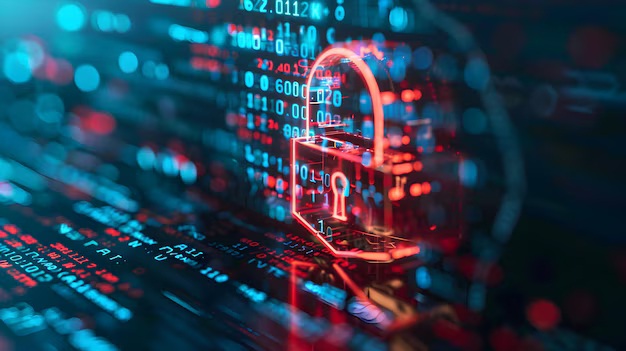As quantum computing advances, organizations are beginning to recognize the risks it poses to traditional encryption. However, one of the biggest misconceptions about quantum security is that it can be solved with a single tool or technology upgrade. In reality, becoming quantum-safe requires a long-term, strategic approach rather than a quick-fix solution.
Quantum threats aren’t just a future concern it is already shaping cybersecurity policies and regulations. Both the United States, through organizations like the National Institute of Standards and Technology (NIST), the Cybersecurity and Infrastructure Security Agency (CISA), and the National Quantum Initiative (launched in 2018), and Europe, with efforts from the European Commission, the European Union Agency for Cybersecurity (ENISA), and the Quantum Flagship program (launched in 2018), have been actively working on developing new cryptographic standards and strategies to protect against the cybersecurity risks posed by quantum computing.
Governments and security experts are actively working to define post-quantum cryptographic (PQC) standards, and organizations that fail to prepare now could find themselves scrambling to keep up when quantum attacks become a reality. It’s essential to highlight that businesses must adopt a process-driven approach that involves continuous evaluation, adaptation, and future-proofing.
Step 1: Understanding the Risk
The first step in the process is gaining a clear understanding of the risk. Quantum computing operates fundamentally differently from classical computing. It relies on quantum bits or qubits, which allow quantum computers to perform calculations that traditional computers cannot achieve within a feasible timeframe. This makes quantum computers a powerful yet disruptive force. While they can solve incredibly complex problems, they also introduce significant cybersecurity risks.
The main concern lies in encryption. Most of today’s widely used cryptographic systems rely on mathematical problems that quantum computers could solve exponentially faster than classical machines. For example, RSA (Rivest–Shamir–Adleman) and ECC (Elliptic Curve Cryptography) encryption (used to protect everything from emails to online banking) are vulnerable to quantum decryption. Without proactive security upgrades, organizations relying on these cryptographic methods may find their data exposed when quantum computing reaches maturity.
Step 2: Transitioning to Post-Quantum Cryptography
Becoming quantum-safe is not just about upgrading encryption software and calling it a day. The process of achieving quantum security involves evaluating your organization’s cybersecurity needs and a structured transition to post-quantum cryptography (PQC). PQC algorithms are designed to be resistant to attacks from both classical and quantum computers. But it is important to highlight that the shift to these new algorithms is not immediate, it requires careful planning, testing, and scaling across all critical systems.
In response to this growing challenge, Help AG has partnered with Sandbox AQ, a global leader in quantum-safe, AI-powered cybersecurity solutions, and Aqtive Guard, Sandbox AQ’s flagship cryptographic management product.
Aqtive Guard enables organizations to maintain cryptographic hygiene, managing keys, certificates, and encryption policies efficiently across complex environments. By ensuring proper key lifecycle management and monitoring crypto practices, Aqtive Guard helps organizations reduce vulnerabilities, enforce compliance, and achieve robust crypto agility.
Together, Help AG and Sandbox AQ empower enterprises and governments across the Middle East to integrate quantum-ready cryptography, AI-driven key management, and PQC frameworks into existing infrastructures. This strategic approach positions organizations to stay ahead of emerging threats while aligning with global standards.
This partnership represents a major step forward in securing the region’s digital landscape, empowering organizations to stay ahead of emerging threats while ensuring compliance with evolving global standards.
Step 3: Embracing Crypto-Agility
A key part of this transition is developing crypto-agility, the ability to quickly adapt and swap out cryptographic protocols as threats evolve. The quantum threat landscape is continuously changing, meaning that even today’s post-quantum encryption standards could evolve over time. Quantum-safe encryption is not just about replacing one technology with another; it’s about embedding flexibility into your systems so that as new quantum algorithms emerge, organizations can seamlessly integrate improvements into their security infrastructure.
Quantum security is an evolving journey. To truly safeguard your organization, you need a partner who understands the complexities of the quantum landscape and can guide you every step of the way. Help AG offers more than just security solutions—we provide a strategic partnership. We’ll work with you to assess your unique risk profile, develop a customized roadmap for PQC implementation, and ensure your systems remain crypto-agile in the face of emerging threats.
Aqtive Guard plays a central role here as well, enabling organizations to update and rotate keys, manage certificates, and maintain encryption best practices seamlessly. This ensures that organizations can integrate new quantum-resistant algorithms quickly, without disrupting operations.
Ready to Embark on Your Quantum-Safe Journey?
Help AG and Sandbox AQ are at the forefront of empowering organizations to future-proof their security infrastructure for the quantum era. Together, we are bringing quantum-safe solutions to the Middle East, enabling businesses to protect sensitive data, safeguard trust, and build resilience in the face of unprecedented technological change.
Join us at Black Hat Middle East 2025 in Riyadh from December 2-5 as we showcase our partnership with Sandbox AQ as a Diamond Sponsor. Discover how Help AG and Sandbox AQ are shaping the region’s quantum-safe cybersecurity future and learn how to prepare your organization for the challenges and opportunities ahead.
Key Takeaway:
Achieving quantum safety is an ongoing journey, not a one-time implementation. Organizations must adopt a process-oriented approach, integrating quantum-resistant strategies and prioritizing crypto-agility to ensure long-term security. Building systems that can flexibly evolve alongside quantum advancements will be key to maintaining resilience in the quantum age.










